Hong Kang
Progressive Multi-scale Consistent Network for Multi-class Fundus Lesion Segmentation
May 31, 2022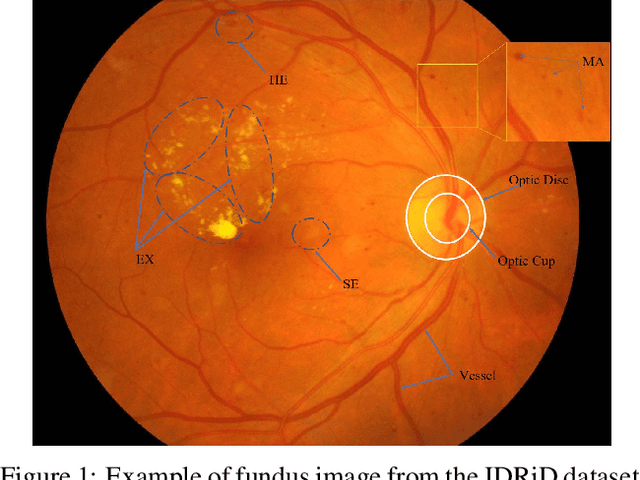
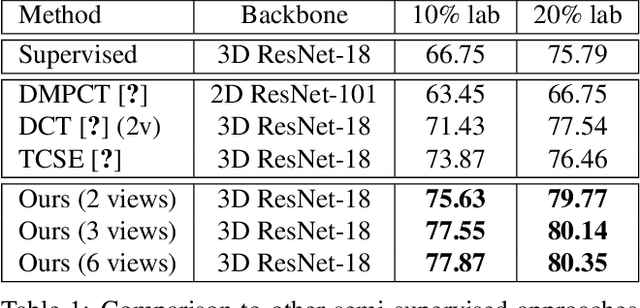
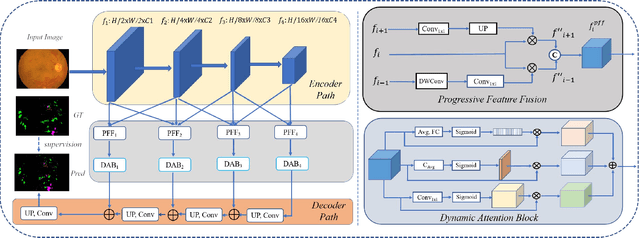
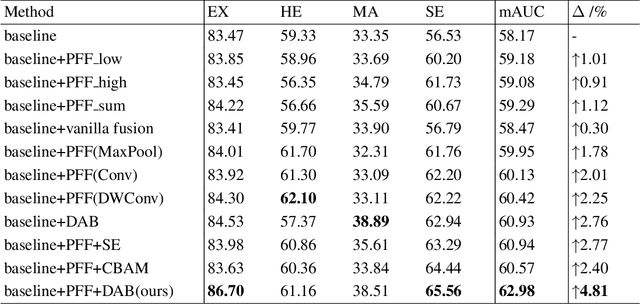
Abstract:Effectively integrating multi-scale information is of considerable significance for the challenging multi-class segmentation of fundus lesions because different lesions vary significantly in scales and shapes. Several methods have been proposed to successfully handle the multi-scale object segmentation. However, two issues are not considered in previous studies. The first is the lack of interaction between adjacent feature levels, and this will lead to the deviation of high-level features from low-level features and the loss of detailed cues. The second is the conflict between the low-level and high-level features, this occurs because they learn different scales of features, thereby confusing the model and decreasing the accuracy of the final prediction. In this paper, we propose a progressive multi-scale consistent network (PMCNet) that integrates the proposed progressive feature fusion (PFF) block and dynamic attention block (DAB) to address the aforementioned issues. Specifically, PFF block progressively integrates multi-scale features from adjacent encoding layers, facilitating feature learning of each layer by aggregating fine-grained details and high-level semantics. As features at different scales should be consistent, DAB is designed to dynamically learn the attentive cues from the fused features at different scales, thus aiming to smooth the essential conflicts existing in multi-scale features. The two proposed PFF and DAB blocks can be integrated with the off-the-shelf backbone networks to address the two issues of multi-scale and feature inconsistency in the multi-class segmentation of fundus lesions, which will produce better feature representation in the feature space. Experimental results on three public datasets indicate that the proposed method is more effective than recent state-of-the-art methods.
A Benchmark of Ocular Disease Intelligent Recognition: One Shot for Multi-disease Detection
Feb 16, 2021



Abstract:In ophthalmology, early fundus screening is an economic and effective way to prevent blindness caused by ophthalmic diseases. Clinically, due to the lack of medical resources, manual diagnosis is time-consuming and may delay the condition. With the development of deep learning, some researches on ophthalmic diseases have achieved good results, however, most of them are just based on one disease. During fundus screening, ophthalmologists usually give diagnoses of multi-disease on binocular fundus image, so we release a dataset with 8 diseases to meet the real medical scene, which contains 10,000 fundus images from both eyes of 5,000 patients. We did some benchmark experiments on it through some state-of-the-art deep neural networks. We found simply increasing the scale of network cannot bring good results for multi-disease classification, and a well-structured feature fusion method combines characteristics of multi-disease is needed. Through this work, we hope to advance the research of related fields.
Applications of Deep Learning in Fundus Images: A Review
Jan 25, 2021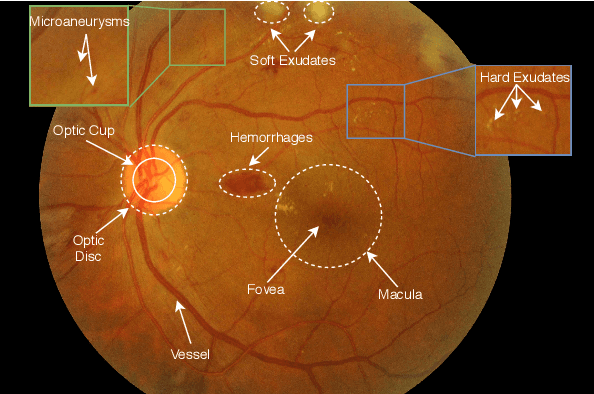
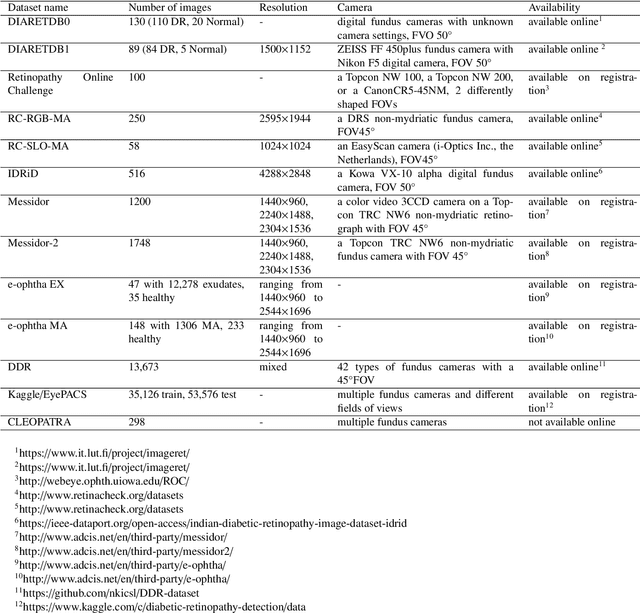
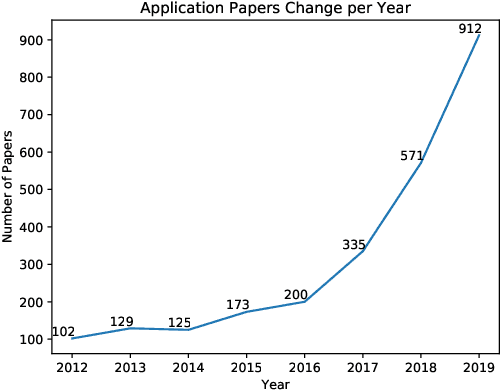
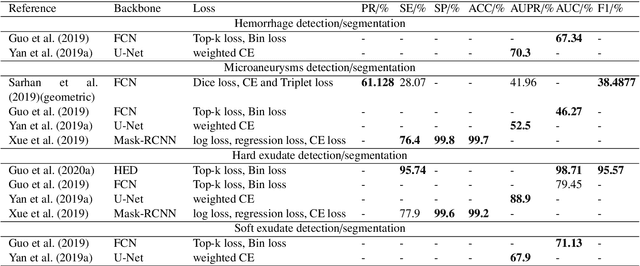
Abstract:The use of fundus images for the early screening of eye diseases is of great clinical importance. Due to its powerful performance, deep learning is becoming more and more popular in related applications, such as lesion segmentation, biomarkers segmentation, disease diagnosis and image synthesis. Therefore, it is very necessary to summarize the recent developments in deep learning for fundus images with a review paper. In this review, we introduce 143 application papers with a carefully designed hierarchy. Moreover, 33 publicly available datasets are presented. Summaries and analyses are provided for each task. Finally, limitations common to all tasks are revealed and possible solutions are given. We will also release and regularly update the state-of-the-art results and newly-released datasets at https://github.com/nkicsl/Fundus Review to adapt to the rapid development of this field.
 Add to Chrome
Add to Chrome Add to Firefox
Add to Firefox Add to Edge
Add to Edge